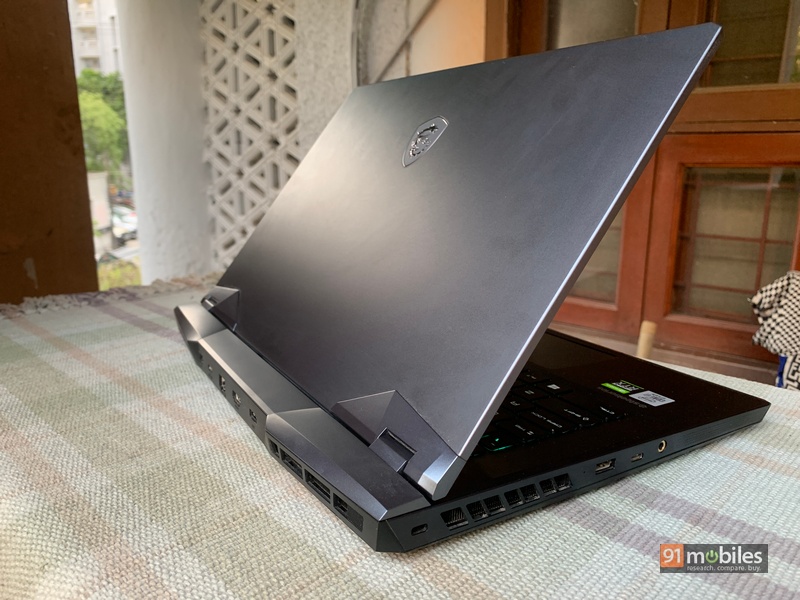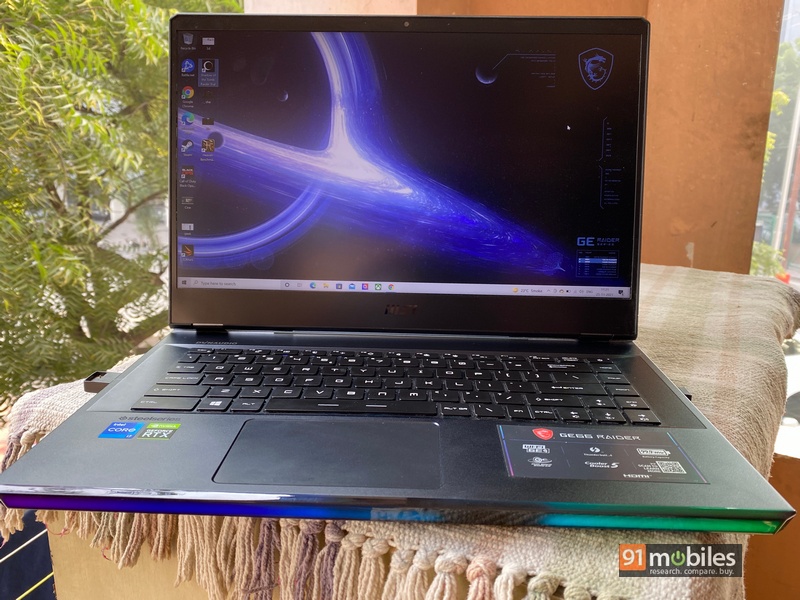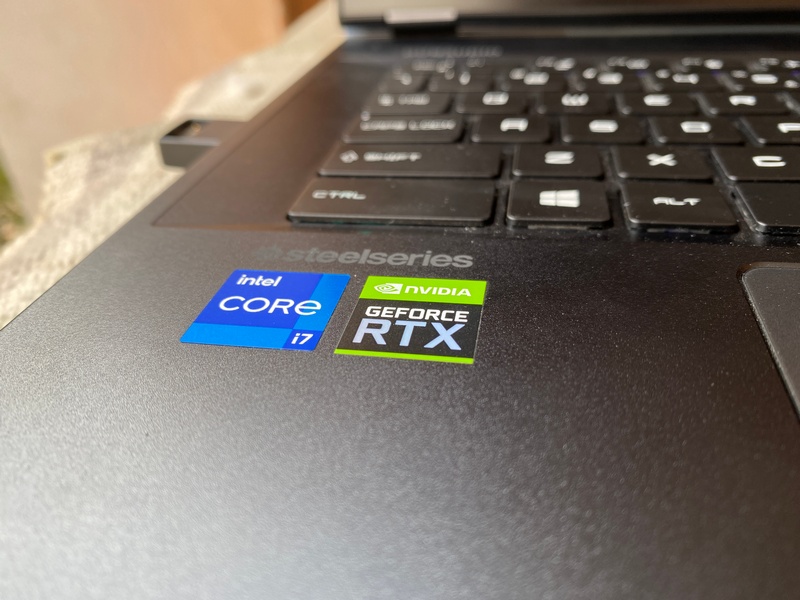MSI is perhaps my go-to brand for quality gaming laptops at a reasonable price. The company’s GE66 Raider (review) laptop had been a companion of mine for the better part of this year, and I really had no complaints with the device. That being said, the model I was operating ran on the 10th-gen Intel i7 10870H platform which has become slightly outdated. MSI recently upgraded the hardware to make room for the Intel 11th-gen i7 11800H mobile CPU while also improving graphics with the NVIDIA RTX 3070. Apart from that, all aspects of the laptop remain about the same and the new price of this gaming beast stands at Rs 1,99,990 which is about Rs 5,000 more than the previous version. In this deeper look at the latest MSI GE66 Raider, let’s see how good the improvements are with the new chipset and GPU.

Table of Contents
The lowdown
It seems clear that MSI has paid a lot of attention to make the GE66 Raider design very efficient in terms of thermals. I have gone into more depth about the device’s construction, build and hinge mechanism, which you can read here. Briefly put, the GE66 Raider offers a rigid chassis with a smooth hinge and a plethora of vents on three sides for proper heat dissipation. As such the big 99.9Whr battery along with a copious amount of cooling hardware bring up the weight of the device to nearly 2.4kg. The device is packed with ports, including a Type-C Thunderbolt 4, a Type-C USB 3.2 Gen 2, a Type-A USB 3.2 Gen 2, two Type-A USB 3.2 Gen 1 ports along with an SD Express card reader, HDMI 2.1 port, Mini Display Port, and an ethernet slot.

The keyboard and typing experience remain top class as usual and I love the different RGB combinations that can be customised for the backlighting. As for the trackpad, it is usable and has a quick response but serious gaming will normally require the input of an external mouse. A word also on the GE66 Raider 11th-gen’s display which comes with 165Hz refresh rate instead of the 240Hz seen on the previous model. However, you do get a bump in the resolution to QHD (2,560 x 1,440) which claims to support 100 percent of the DCI-P3 colour gamut. There is an anti-glare coating across the panel which diffuses any light directly shining on the screen for better visibility. The brightness levels are adequate enough for outdoor viewing.

The modified internals requires a higher power draw which is why the 11th-gen MSI GE66 comes with a 280W power adapter, an increase of 40W over the 10th-gen model. This makes sense since the RTX 2070 Max-Q has an 80W TDP compared to the 115W on the RTX 3070 being employed on the newer GE66 Raider. The obvious advantage of the 11th-gen i7 11800H, built on Intel’s Tiger Lake 10nm platform, is a boost in CPU performance which can be sustained easily under heavy load. However, normal use cases such as browsing through Chrome or using Microsoft’s Office suite or running multiple applications together will hardly make any discernible difference since the 10th-gen CPU was already pretty good at handling moderate tasks. In terms of benchmarks, on Cinebench R23 the 11th-gen 11800H gets a multi-core score of 8,053 which is about 6 percent higher than the previous gen. On Geekbench 5, the difference is higher where the former gets a multi-core score of 7,171 which is about 19 percent higher.
The GPU side of things also looked more promising with 3DMark’s Time Spy showing a 9,895 overall score which is 20 percent better than what the RTX 2070 Max Q in the previous model could achieve. AAA titles like Call of Duty Cold War ran at about 60-70fps on the device at QHD resolution. The 2070 was running at 68fps at FHD and V-sync enabled. Shadow of the Tomb Raider’s benchmark ran at 82fps at the highest settings, which is slightly lower than the 92fps on the previous model’s 2070. Counter-Strike: GO and Valorant ran perfectly at the highest settings to deliver between 100-120fps which is something that the RTX 2070 was also able to do. Quite frankly, the GPU performance in real-world games does not translate as well as the 3070’s specs on paper seem to indicate. The battery life on the device is average when compared to ultrabooks that can last for up to 10-12 hours on a single charge. While the GE66 has a rather huge 99.9Whr cell, the hardware’s power draw just drains the battery quickly for any sustained unplugged usage.

Final verdict
The MSI GE66 Raider is, without a shadow of doubt, a very capable heavy-duty gaming machine. It is packed to the core with some incredible specs which include a top-of-the-line GPU, an immersive display, and top-notch thermal management. The new price tag of Rs 1,99,990 is high, but that’s the price you have to pay for accomplishing graphically-intensive tasks with relative ease. While Intel’s Alder Lake 12th-gen CPUs are definitely on the horizon, I would wholeheartedly recommend the GE66 as a gaming machine that gets the job done and then some.

Editor’s rating: 4 / 5
Pros
- Solid performance
- Excellent display
- Good thermal management
Cons
- Sub-par battery life
- Speakers could be better










